Why you can trust Tom's Hardware
The GM32-FQ, like its GM27-FQS stablemate, impressed me with its color accuracy. And even more so because it needs absolutely nothing to achieve some superlative test results.
Grayscale and Gamma Tracking
Our grayscale and gamma tests use Calman calibration software from Portrait Displays. We describe our grayscale and gamma tests in detail here.
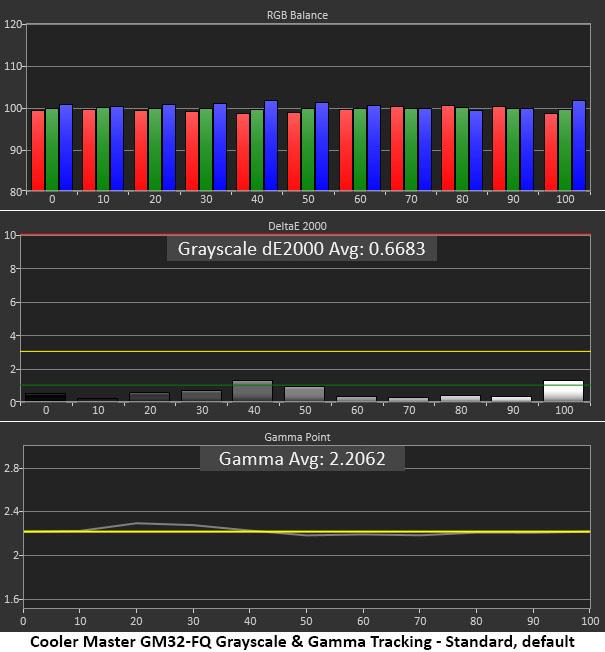
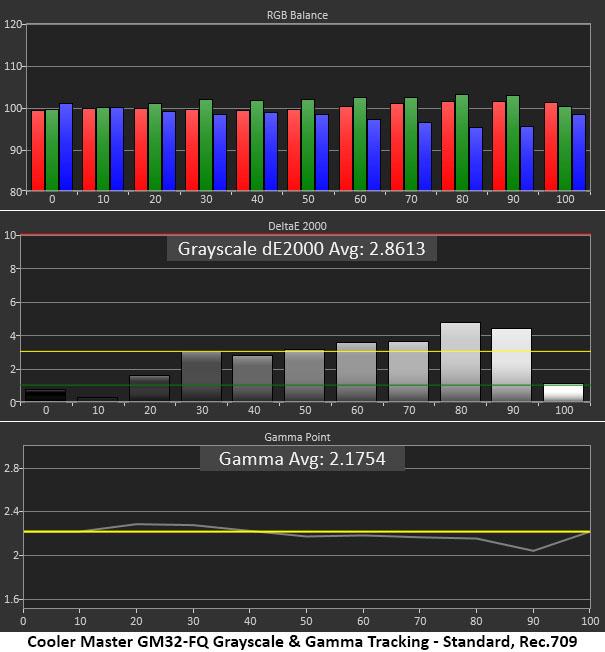
Grayscale tracking charts don’t get much better than this even when a monitor has been calibrated. The GM32-FQ manages this feat right out of the box. There are no visible errors, and all values are under 1dE except 40 and 100% which just crack the 2dE line. Gamma is pretty much spot-on as well, with only a slight rise at 20 and 30%, which means those values are a bit under the mark. This is something only a meter can detect, not the naked eye.
In the Rec.709 (BT709) gamut mode, grayscale tracking has a few barely visible errors. The color temp presets are grayed out, so you can’t make any changes here. 80 and 90% brightness show the most obvious issue with a slight blue deficiency. Gamma is also light at 90%. These are minor errors but visible, nonetheless.
Comparisons
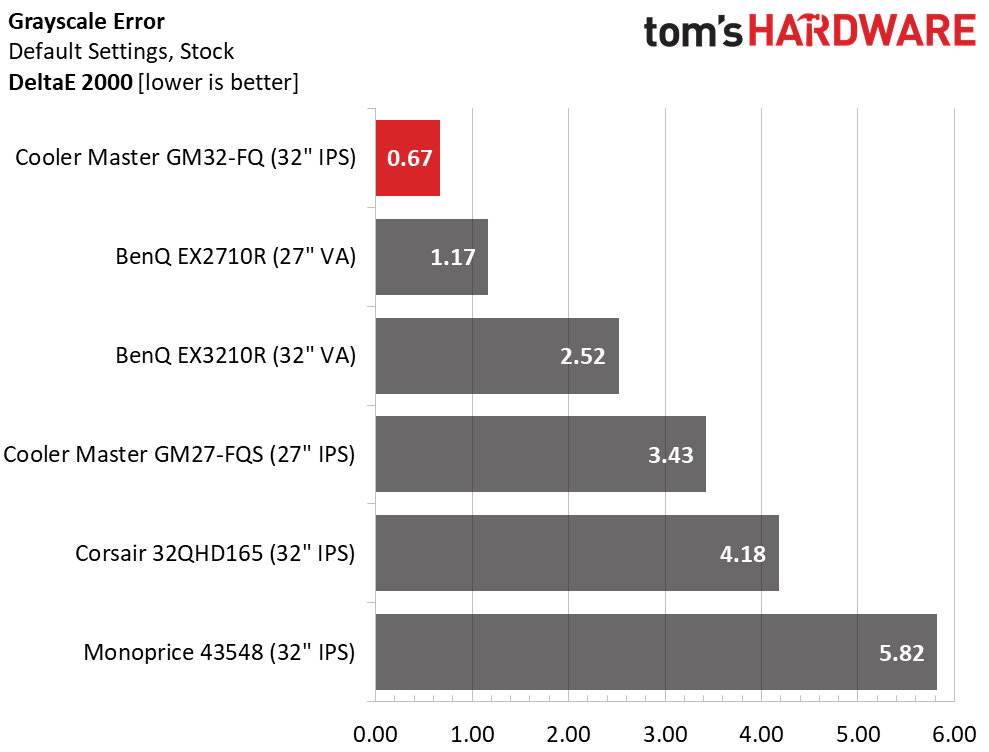
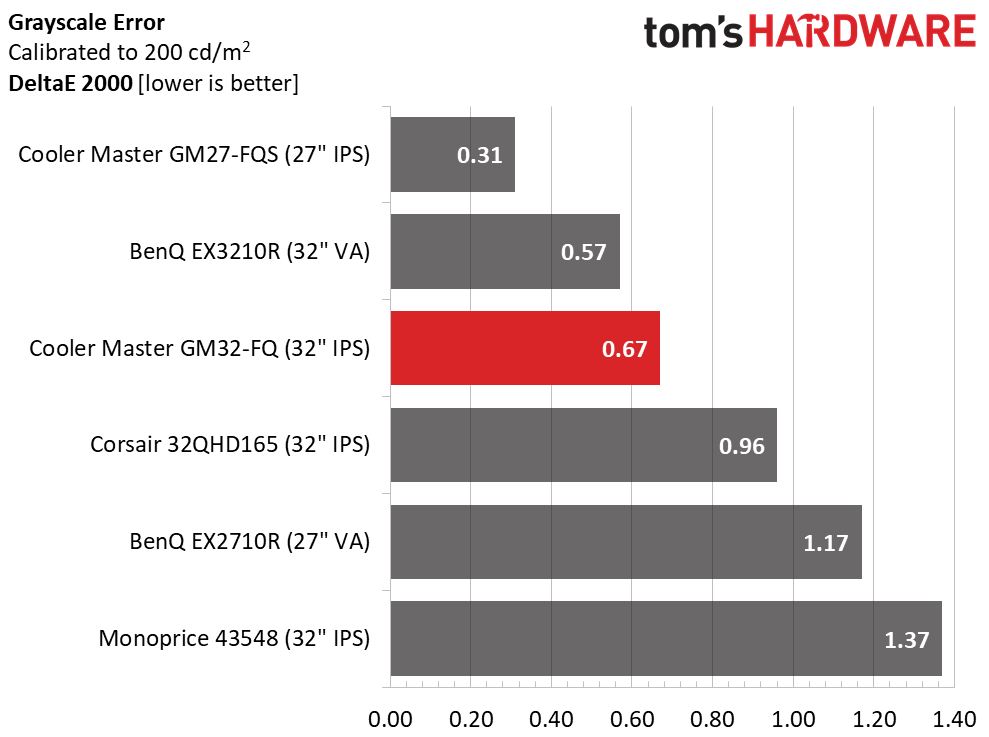
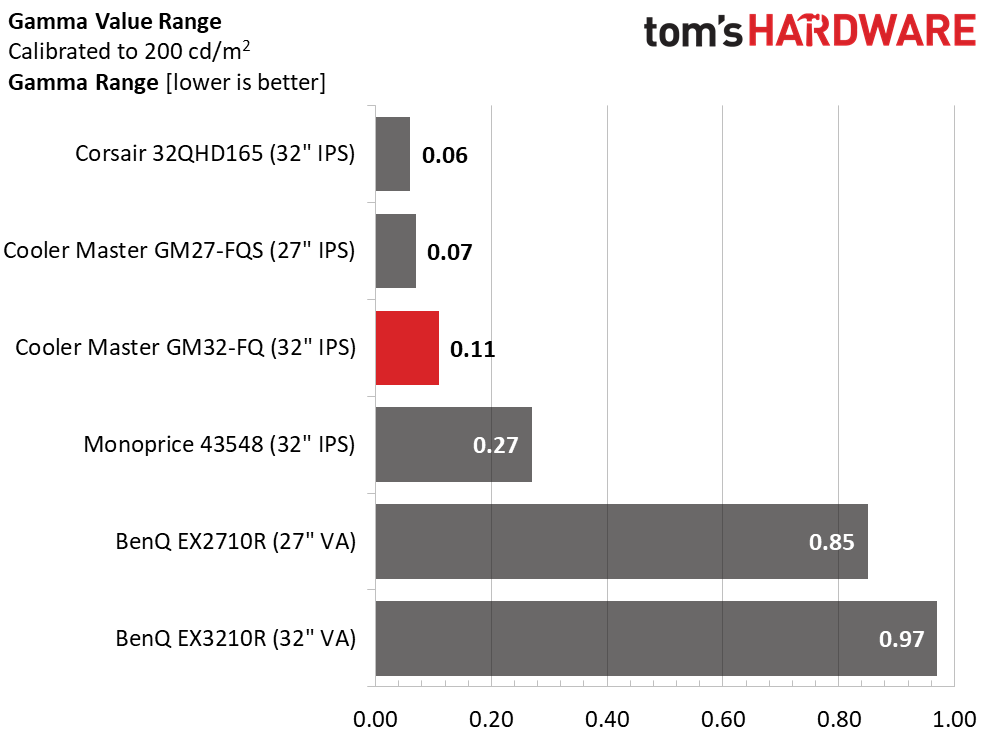
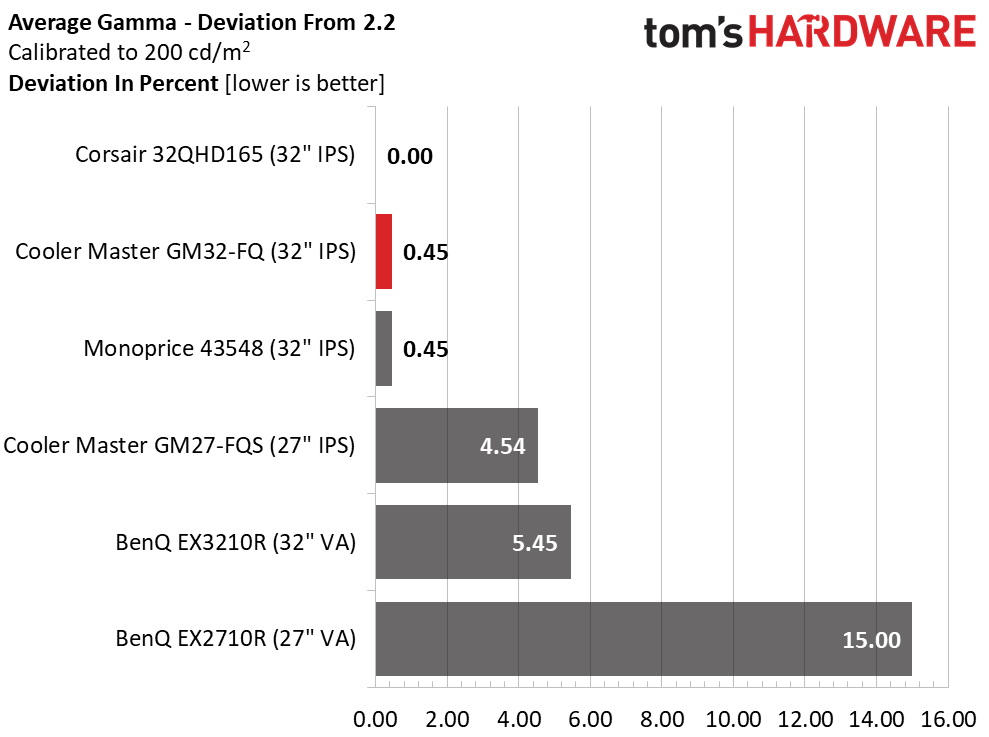
I attempted to calibrate the GM32-FQ and could not improve upon its default grayscale error of 0.67dE. Therefore, I’m showing the same number for the before and after comparisons. It is the clear winner in the out-of-box contest and finishes a close third when the other screens are adjusted. This is great performance, which is made even more impressive by near-perfect gamma tracking. A 0.11 range of values and 0.45% deviation is about as low as it gets.
Color Gamut Accuracy
Our color gamut and volume testing use Portrait Displays’ Calman software. For details on our color gamut testing and volume calculations, click here.
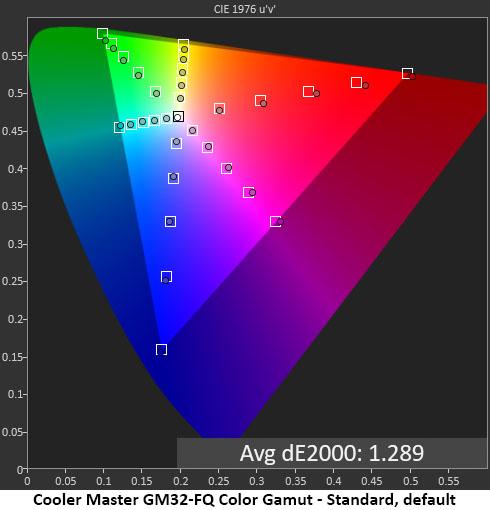
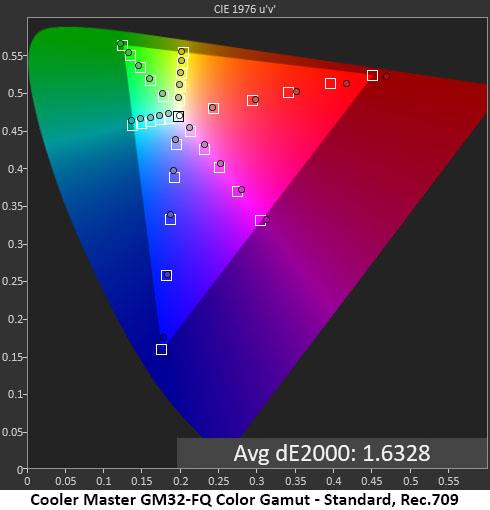
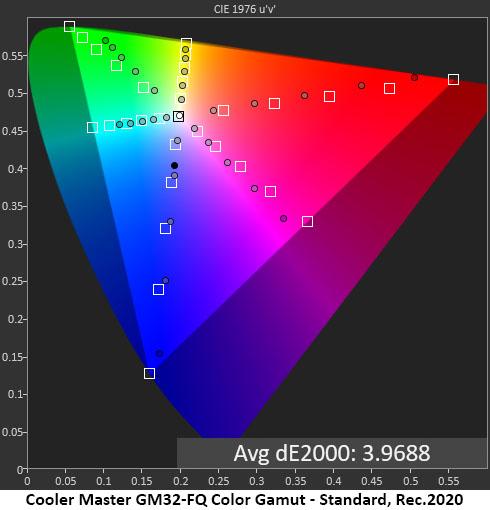
The GM32-FQ is again a winner out of the gate. Very few monitors have color this accurate after calibration, much less by default. Aside from a slight over-saturation in red, all points are on-target. I’ve also included the Rec.709 and Rec.2020 charts to show those color presets. 709 is also over-saturated in red but not enough to affect the image negatively. Rec.2020 is not a useful preset because none of the colors reach their targets. The whole gamut is under-saturated. This isn’t a bad thing as virtually no monitor can pass this test. But don’t assume that a mode marked “BT2020” will deliver that gamut.
Get Tom's Hardware's best news and in-depth reviews, straight to your inbox.
Comparisons
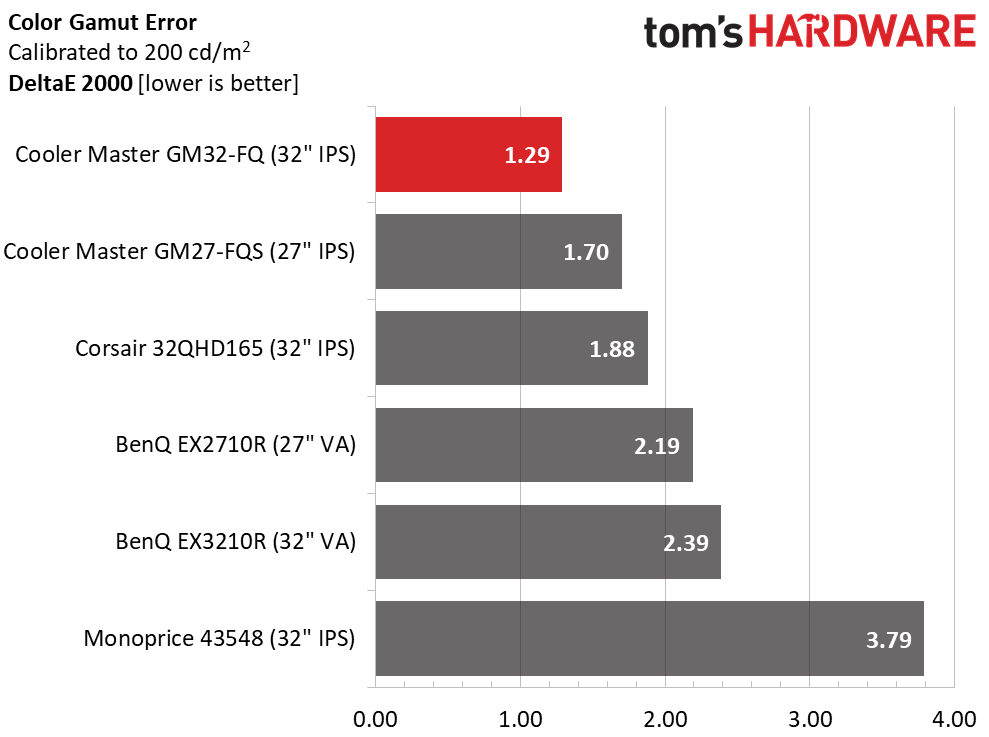
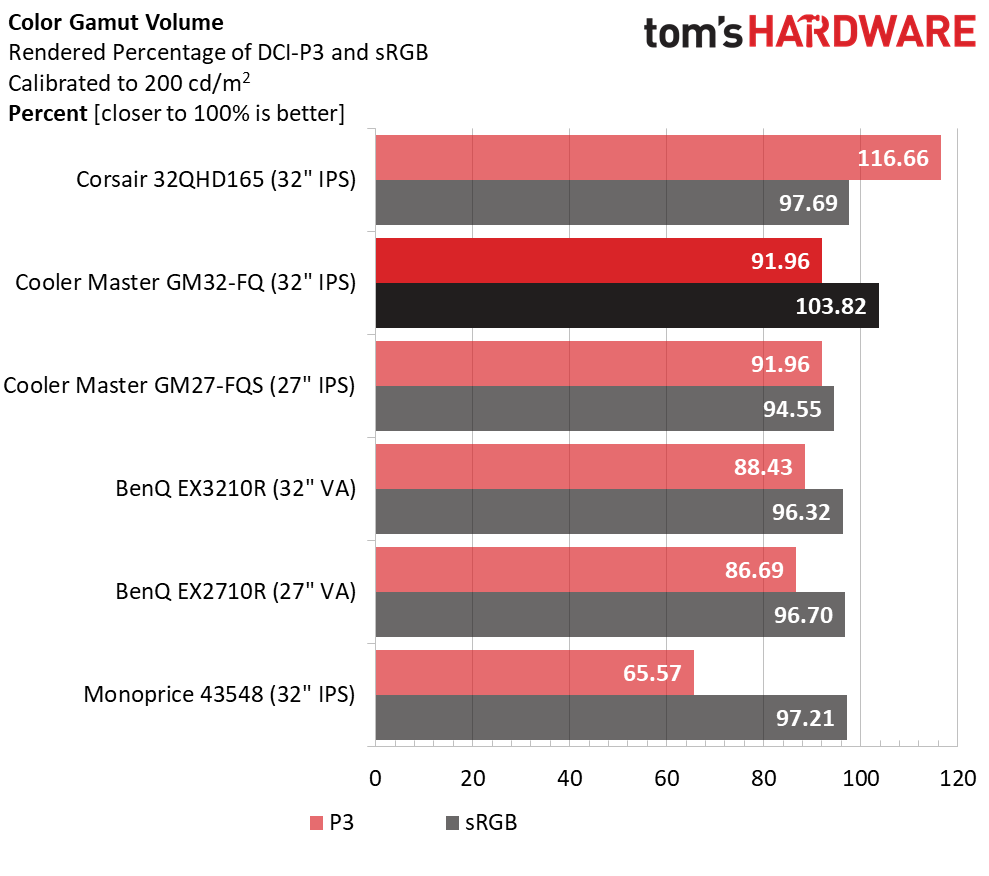
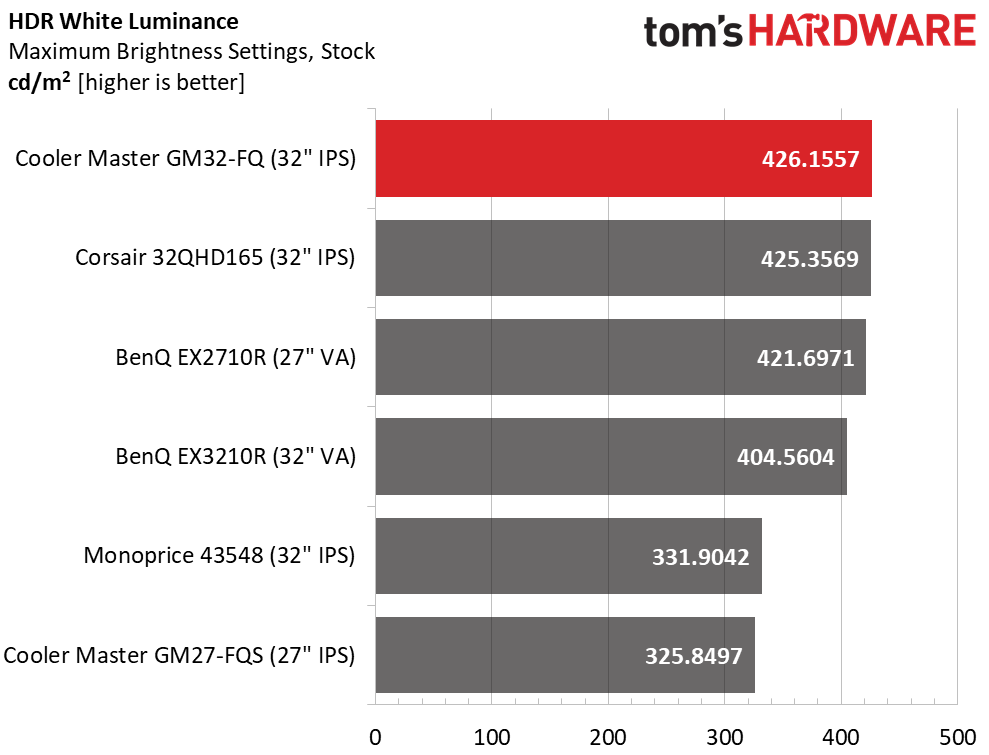
There isn’t much more to say other than that the GM32-FQ is one of the most color-accurate monitors I’ve ever tested. That it achieves this with no adjustment is amazing. Though its advantage over the GM27-FQS is slight, I’d still go for the larger screen for this reason, along with its higher contrast and brightness.
Clearly, the two Cooler Master monitors are on the same level for gamut volume. 91.96% is higher than average though a few screens I’ve tested cover more than 100% of DCI-P3. The G32-FQ has a larger sRGB volume than its 27-inch cousin which could be a factor for users needing greater accuracy for photo editing.
Current page: Grayscale, Gamma and Color
Prev Page Brightness and Contrast Next Page HDR Performance
Christian Eberle is a Contributing Editor for Tom's Hardware US. He's a veteran reviewer of A/V equipment, specializing in monitors. Christian began his obsession with tech when he built his first PC in 1991, a 286 running DOS 3.0 at a blazing 12MHz. In 2006, he undertook training from the Imaging Science Foundation in video calibration and testing and thus started a passion for precise imaging that persists to this day. He is also a professional musician with a degree from the New England Conservatory as a classical bassoonist which he used to good effect as a performer with the West Point Army Band from 1987 to 2013. He enjoys watching movies and listening to high-end audio in his custom-built home theater and can be seen riding trails near his home on a race-ready ICE VTX recumbent trike. Christian enjoys the endless summer in Florida where he lives with his wife and Chihuahua and plays with orchestras around the state.
-
wakuwaku ReplyIn practice, the GM32-FQ has a higher output than the GM27-FQS and is therefore certified VESA DisplayHDR 400, a figure I verified in testing.
I would like to point out this line is inaccurate. Specifically that there are no Cooler Master monitors that are certified DisplayHDR 400 at the time of me writing this post.
Cooler Master markets this monitor as DisplayHDR 400 "compatible". It is on the website, the spec sheet on the website and on the box packaging. They didn't market it as DisplayHDR 400 certified, which is what your review is implicating.
You can check the webpage here:
https://www.coolermaster.com/catalog/setup/monitors/gm32-fq/
and the spec sheet here:
https://www.coolermaster.com/catalog/setup/monitors/gm32-fq/#specifications
You can also check the DisplayHDR list of certified HDR400 monitors here:
https://displayhdr.org/certified-products/#tab-400
There are no Cooler Master monitors or specifically the GM32-FQ when you search the above list.
To think that a reputable and popular site like tom's can have reviewer that can't be bothered to read up official information and specs and check them before posting a review. I have similarly pointed out Techpowerup making the same mistake, albeit on a different Cooler Master monitor, and now here I am again doing the same thing. Maybe all you reviewers should contact Cooler Master and tell them that their marketing is so misleading that reviewers keep getting it wrong.
https://www.techpowerup.com/forums/threads/cooler-master-gm34-cwq-argb.296809/post-4797404